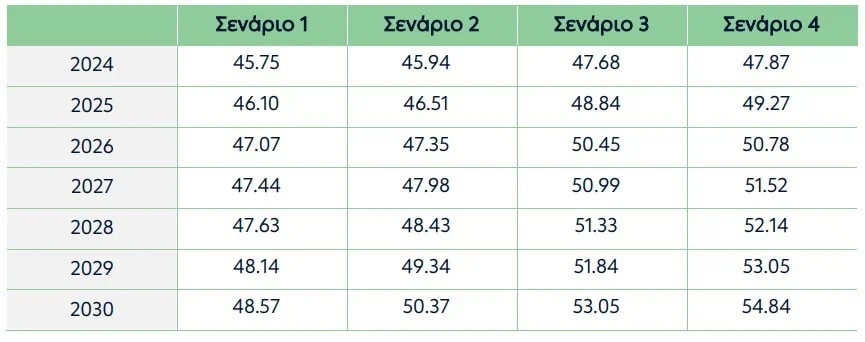
Photo: freepik.com
Contrary to earlier estimates, heat pumps and electric cars are not expected to significantly raise electricity demand in Greece.
Heat pumps and electric cars, along with other new green technologies, are the cornerstones of the European Green Deal and the REPowerEU plan. They electrify transportation and heating and cooling on the path to achieving the net zero emissions goal.
The Hellenic Electricity Distribution Operator (HEDNO) recently published its scenarios for the years up to 2030 concerning demand in the distribution network.
The grid is ready to accommodate any number of electric cars
HEDNO examined four scenarios:
1. Electric cars reach 30% of total car sales by 2030, which is the government’s stated goal based on the National Energy and Climate Plan (NECP);
2. An extreme path with electric cars reaching 90% by 2030 if the European Union decides to phase out internal combustion engines;
3. Scenario 1, together with large projects, based on applications by large network users and including new demand from harbors, hospitals, industries, airports etc;
4. Scenario 2, together with large capacity applications currently under consideration.

It should be noted that for electric cars, HEDNO calculated an average consumption of 20 kWh per 100 kilometers. Last year, the operator’s CEO, Anastasios Manos, said the grid is ready to accommodate any number of electric cars, even supporting a 90% penetration goal.
Electrification of heating already underway even without heat pumps
When it comes to heat pumps, HEDNO estimates their additional demand to be 0.2 TWh per year. It based the assumption on the national plan to upgrade 438,000 houses and 170,000 commercial buildings of the services sector by 2030.
HEDNO further highlights there are already times of high demand when electricity substitutes other forms of heating in buildings through the use of air conditioning. It means heat pumps will likely bring a smaller rise in demand than originally thought. Similarly, in large commercial buildings, heat pumps are expected to substitute not just heating systems that are based on fossil fuels, but also central air conditioning units that already use electricity.
Based on all of the above, we can exclude scenario 2, as it seems the European Union and Greece would postpone the proposed phaseout of internal combustion engines. What is left for electric cars is scenario 1, where the rise of demand is smaller than 3 TWh in a six-year span. Even if we add the 0.2 TWh per year from heat pumps, the rise is rather small.
On the other hand, the bulk of new demand is seen coming from new user connections and large user applications that HEDNO says it would try to accommodate in its network.


















Be the first one to comment on this article.